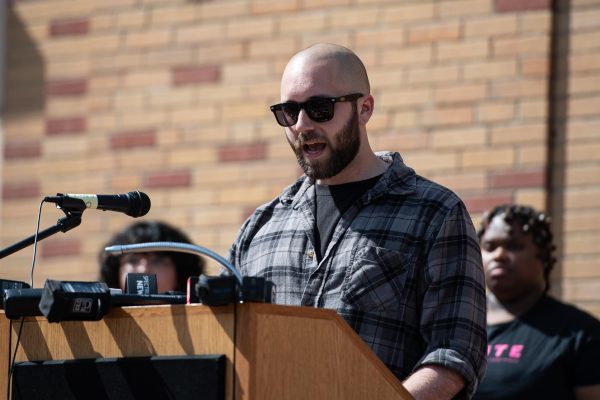Our view: more jobs, lower tuition
February 7, 2008
The ideas proposed in Gov. Ted Strickland’s State of the State address yesterday could be a dream come true for everyone from college-bound students to near grads. By focusing on education and the economy, it seemed as if Strickland wrote his speech for the university population.
Last year, Strickland promised to freeze tuition at Ohio colleges for two years. This year, students’ rates, at least for tuition, stayed the same. The state is trying to improve child health care and elementary and secondary school funding, which will make success easier for future students.
By that time, today’s college students will be in the workforce and settling down, situations which the government is also trying to improve. While the government hasn’t made any concrete moves to fix the lending and home mortgage crisis, the economy is another matter.
Last year, Strickland said, businesses across the state increased and retained jobs in an effort to boost the failing economy. This year, he announced the Building Ohio Jobs program, which aims to create more than 80,000 new jobs across the state. At the same time, Strickland hopes the program will strengthen the foundations of the job market, such as better roadways for transporting products and more research to improve them.
The program will also invest in areas such as renewable energy and the preservation of farm land, both of which would not only create jobs, but will also make Ohio more green and environmentally friendly.
Last year’s budget was all about savings and cuts; now, while some cuts in still unnamed areas will be made, Strickland said he’s not afraid to invest a bit to spark the failing economy, even if it means creating some debt.
This is great for students who, right now, face a somewhat terrifying future. Across the country, the job market is becoming more and more competitive as jobs become scarce. Unemployment is on the rise and inflation is soaring. The Building Ohio Jobs project has a lot of potential to create more opportunities for our recent grads, provided employers keep the jobs within the state, rather than seeking outside sources. Also, in the future, employers will have to find a way to maintain these jobs without government funding. Hopefully by then, the economy will have healed and regained its ability to sustain itself.
For the students who will replace us at Kent State, there’s also good news. Strickland has said his greatest priority as governor is education, and his plans for the state show that. He talked about the benefits the University System holds for students in terms of price and convenience. While this is great for those who don’t necessarily want or can’t get a traditional college education, we hope the system won’t institutionalize Ohio’s colleges to the point that they lose their individual identities.
Trepidation aside, the system, which will connect all colleges and universities across the state – four-year, regional and community – does hold a lot of opportunity for Ohio’s residents. Right now, Strickland said, Ohio is now among the 10 most expensive states for tuition. After the system is in full effect, Strickland said we will be in the 10 least expensive.
Another new program, Seniors to Sophomores, will let high school seniors attend college for their final year of school for free. The students would attend college courses instead of high school ones, receiving a free year of college credits while finishing their high school degree. While a great idea, this will only be available to students who meet certain academic requirements – students who are already likely to attend college and who are more likely to receive scholarships to do so. This is a step toward increasing college attendance, but just a small one.
The above editorial is the consensus opinion of the Daily Kent Stater editorial board. Managing editor Tim Magaw did not contribute because he covered the address.























